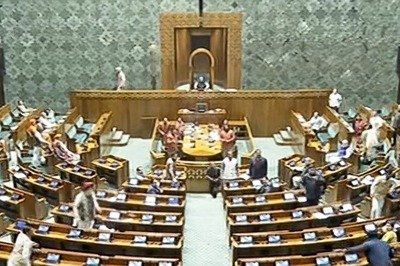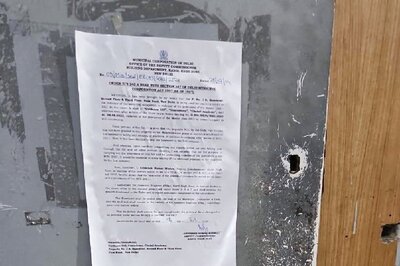
views
New Delhi: Air quality in Delhi’s 13 pollution hotspots improved significantly due to restrictions on industrial operations and commercial and vehicular activity during the lockdown, according to the Central Pollution Control Board. The Delhi government has identified 13 pollution hotspots in the city based on the annual average of PM10 and PM2.5 levels. These are Okhla Phase-II, Dwarka, Ashok Vihar, Bawana, Narela, Mundka, Punjabi Bagh, Wazirpur, Rohini, Vivek Vihar, Anand Vihar, R K Puram and Jahangirpuri. PM2.5 is tiny particulate matter less than 2.5 microns in diameter. It can enter deep into the lungs and even into the bloodstream.
The CPCB said it analyzed air quality data in three stages pre-lockdown (March 1-21), lockdown phase-I (March 25 April 19) and lockdown phase-II (April 20 May 3). A comparative analysis was also done for the corresponding time periods in 2019 to assess the improvement. “Noticeable reduction in PM2.5, PM10 and NO2 levels in hotspots of Delhi was observed during the lockdown period as compared to 2019 levels, in all likelihood due to restrictions on operations of industrial and commercial areas and vehicular activity,” it said. The reduction in PM2.5 levels varied from 54 percent in Jahangirpuri to 26 percent in Punjabi Bagh.
Dwarka, which has a significant presence of residential-cum-institutional sites with substantial traffic movement, recorded a 50 percent decline in PM2.5 levels. “It affirms that traffic restrictions and closure of commercial areas were instrumental in improving air quality,” the CPCB said.
Restrictions on operations of industries in Mundka led to a 38 percent reduction in PM2.5 levels in the first phase of lockdown. “Even though there were data gaps for Anand Vihar and Narela, considerable reduction in PM2.5 levels was observed for the days on which data was available,” the report read. PM10 levels in the hotspots of Dwarka, Mundka, Wazirpur declined by over 60 per cent during the lockdown periods. “This may be attributed to reduced road dust re-suspension due to minimal vehicular movement and restriction on construction and demolition activities,” the apex pollution body said.
Sizeable improvement in NO2 levels was observed across the hotspots as compared to 2019 levels, except Jahangirpuri. Other areas such as Rohini, Ashok Vihar and R K Puram witnessed over 70 percent reduction in NO2 levels during the lockdown periods as against 2019 levels, primarily due to reduced vehicular activity..
Disclaimer: This post has been auto-published from an agency feed without any modifications to the text and has not been reviewed by an editor




















Comments
0 comment